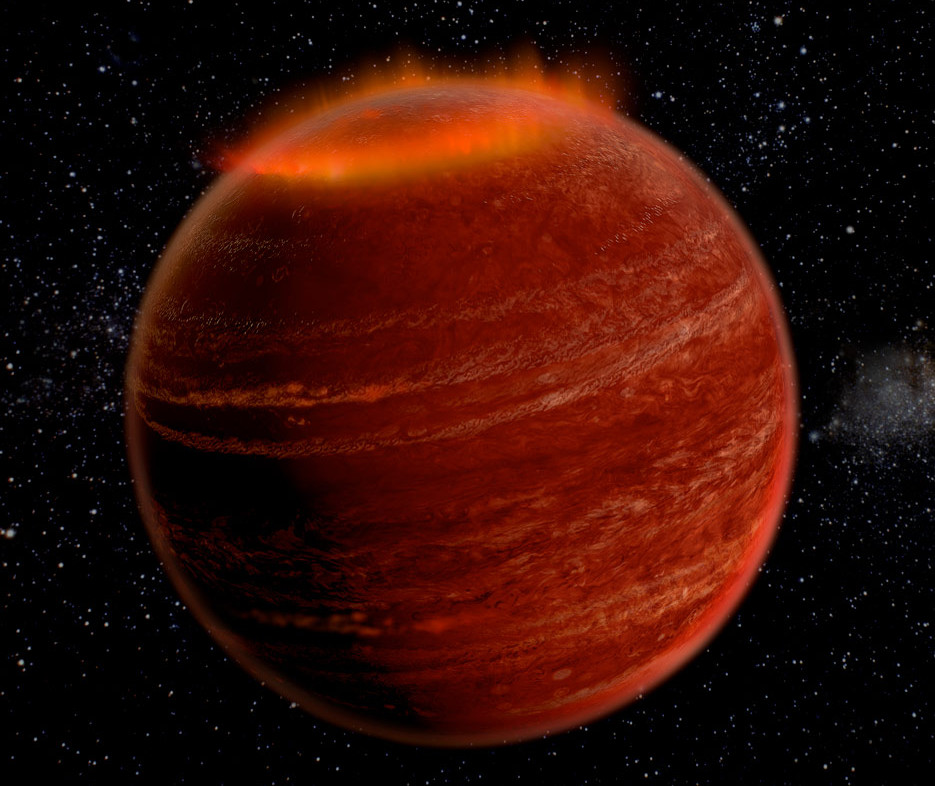

Aurorae—or northern lights—are counted among the most beautiful natural phenomena.. Of course, we have long known that these colorful displays of light are not limited to our planet; we’ve witnessed them on Saturn, Jupiter, and Neptune—some evidence recently surfaced suggesting that even Mars sees them from time to time (in spite of its rather pathetic atmosphere).
They are the result of charged particles ejected from the Sun getting caught in Earth’s magnetic field. Since other stars eject vast quantities of charged particles, it stands to reason that extrasolar planets have aurorae as well, though they may be much different from the aurorae we see in our solar system.
Now, as proof of concept, a team of researchers has not only observed the first extrasolar aurora, but one so powerful, it trumps the most powerful by a factor of 10,000.
Oddly enough, the aurora was actually spotted on a “failed star”—one that is too small to be a star, but too large to qualify as a planet—called a brown dwarf.
The brown dwarf in question—called LSR J1835+3259—was discovered using the radio instruments on the Karl G. Jansky Very Large Array; optical data came from the Keck and Hale Telescopes. When paired, they were able to determine the object’s distance (around 18 light-years) and its characteristics.

They were surprised to learn that the object appears to be surprisingly active magnetically—even more so than stars with significantly more mass
“All the magnetic activity we see on this object can be explained by powerful auroras,” said Gregg Hallinan, one of the study’s authors “This indicates that auroral activity replaces solar-like coronal activity on brown dwarfs and smaller objects.”
The astronomers said their observations of LSR J1835+3259 indicate that the coolest stars and brown dwarfs have outer atmospheres that support auroral activity, rather than the type of magnetic activity seen on more-massive and hotter stars.
The discovery also has implications for studying extrasolar planets. The aurora the scientists observed from LSR J1835+3259 appears powered by a little-understood dynamo process similar to that seen on larger planets in our Solar System. This process is different from that which causes the Earth’s auroral displays—the planet’s magnetic field interacting with the solar wind.
“What we see on this object appears to be the same phenomenon we’ve seen on Jupiter, for example, but thousands of times more powerful,” Hallinan said. “This suggests that it may be possible to detect this type of activity from extrasolar planets, many of which are significantly more massive than Jupiter,” he added.
[Reference: “Astronomers Discover Powerful Aurora Beyond Solar System,” NRAO]
Still yet, astronomers grapple with the line that separates high-mass planets from low-mass stars. Namely, they question why these objects stop growing short of becoming fully-fledged stars. This discovery won’t bring us any closer to answering that question, unfortunately, but it’s still immeasurably cool that we can now spot aurora from around 20 light-years away.